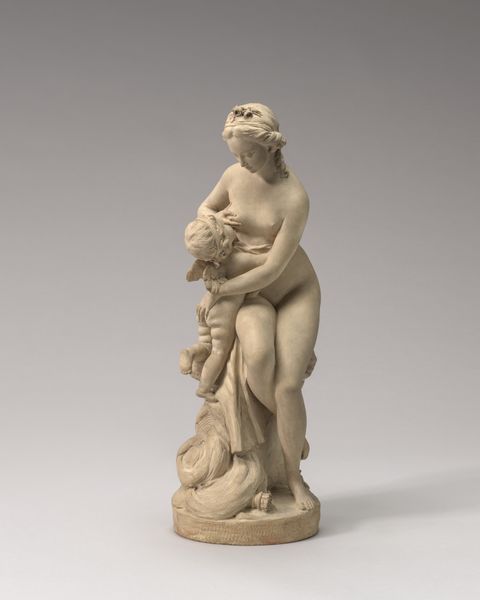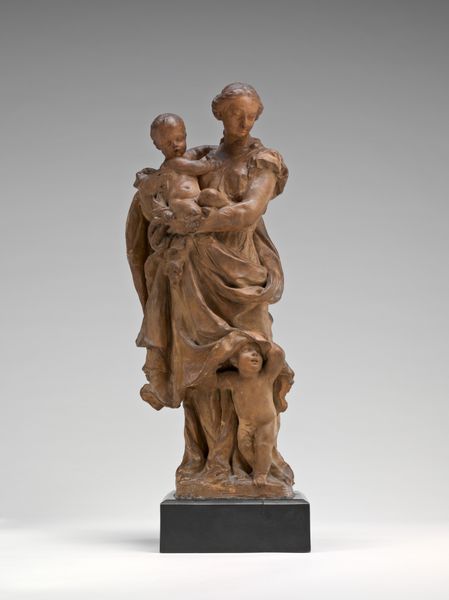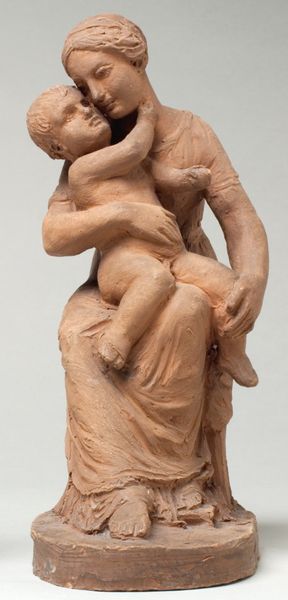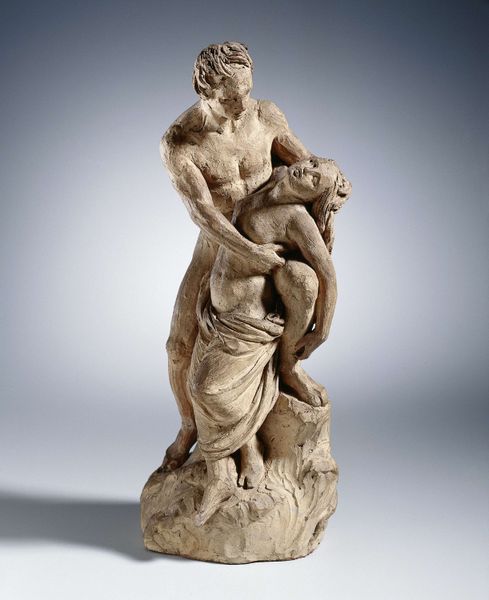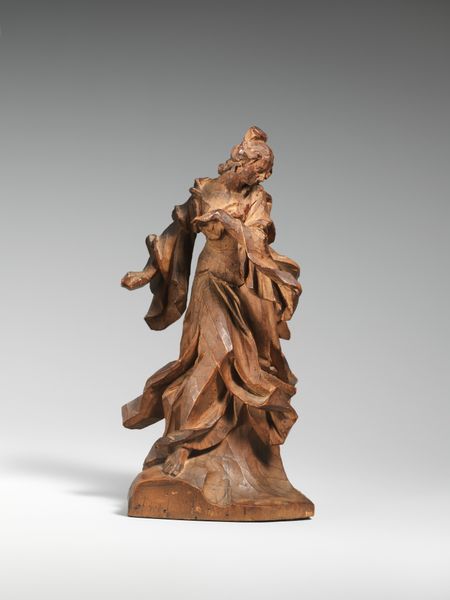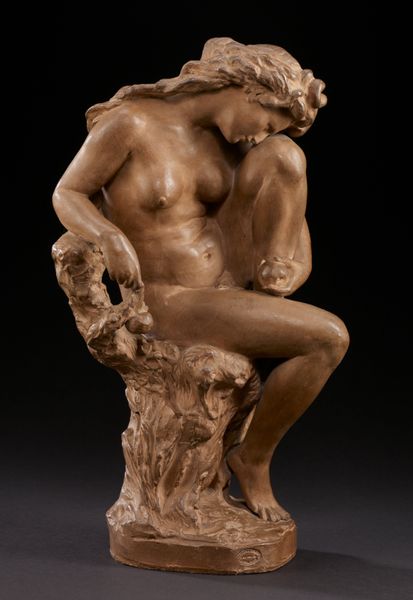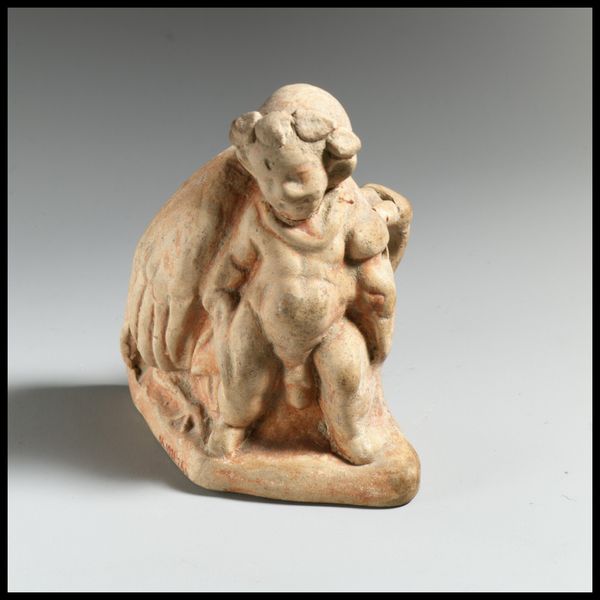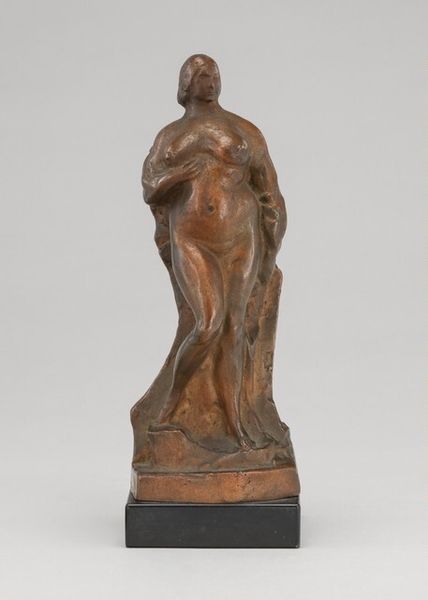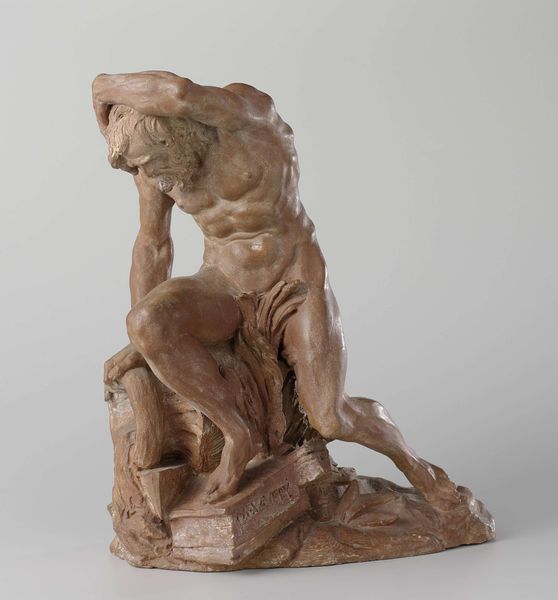
bronze, sculpture
#
statue
#
allegory
#
baroque
#
sculpture
#
bronze
#
figuration
#
sculpture
#
nude
#
statue
Dimensions: 36.5 × 19.1 cm (14 3/8 × 7 1/2 in.)
Copyright: Public Domain
Curator: The way the light plays on this bronze, "The Fear of Love," completed in 1742 by Jean-Louis Lemoyne, is just remarkable, isn't it? The sculpture depicts a woman recoiling from a small cupid figure. Editor: It absolutely strikes a nerve. There's a real emotional drama being conveyed, almost operatic in its intensity. The woman seems torn between allure and trepidation. It’s intriguing. Curator: Indeed, that duality speaks to broader anxieties in 18th-century French society around marriage, love, and social expectations, especially for women of a certain class. Marriages were often strategic alliances, and love was, well, complicated. Editor: Looking at the details, it’s interesting that the Cupid doesn’t have his usual arrow or bow, yet its nakedness already embodies love or, better put, seduction. It reinforces that primal understanding of love’s potency and its simultaneous innocence and dangerous potential. Curator: Absolutely. The woman is shielding her eyes, her pose a classic expression of apprehension. But it’s staged; she seems aware of Cupid, not genuinely surprised. In the French courtly tradition, it served as a sophisticated conversation piece, a reminder of the tightrope people walked in affairs of the heart, knowing full well the gaze was being observed by wider society. Editor: I find it fascinating that she uses what seems to be her own garment to almost shield her eyes but also protect herself from Cupid. This self-protection mechanism illustrates the complexities that women were facing regarding relationships and the power of this God, and this image altogether. Curator: These sculptures often functioned almost as visual debates in upper-class homes, inciting dialogues about societal morals and personal desire. Displaying a sculpture like "The Fear of Love" was less about piety and more about participating in a stylish intellectual circle. Editor: Precisely, and through its layered symbols, we engage in that conversation today, recognizing the lasting power of archetypal imagery and the fears it evokes. It tells us we are just rediscovering feelings from back then that remain the same in their essence. Curator: So well articulated. We realize how even intimate, so-called personal, experiences were—and often still are—profoundly shaped by social and cultural scripts. Editor: Indeed, love might feel boundless, yet it’s constantly negotiating boundaries. Thank you for these insights!
Comments
No comments
Be the first to comment and join the conversation on the ultimate creative platform.
